- Hotline: 852+ 2891 9689
- Whatsapp: 852+ 9146 8426
- [email protected]
- 6/F 29 Austin Road, Tsimshatsui, Kowloon, Hong Kong
A hair transplant is a meticulous surgical procedure that depends on careful planning, surgical skill, and proper aftercare. When one or more of these elements are lacking, the outcome may be unsatisfactory or even harmful.
Over the years we have performed many repair cases. Repairing other doctors’ work is a difficult but challenging job which demands a lot of skill and experience. Unfortunately some cases were beyond repair, and we feel sorry that we cannot help everyone.
Below are key indicators and causes of a failed hair transplant:
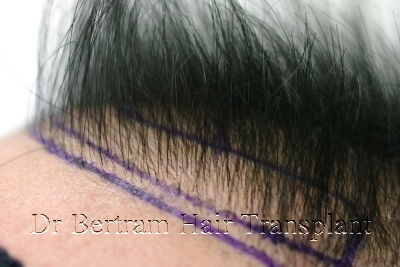
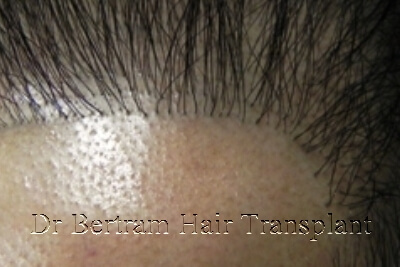
Definition: Less than 70% of the transplanted grafts grow permanently.
Causes:
Graft dehydration during surgery
Excessive trauma or transection of follicles
Poor storage (temperature, solutions)
Improper handling during implantation
Smoking or vascular compromise in the scalp
Inadequate post-op care or infection
Definition: Hairline appears too straight, low, or doll-like.
Causes:
Designed by non-medical staff without understanding facial harmony
Ignoring age-appropriate placement
Overuse of multi-hair grafts in frontal zone
Failure to follow natural hair flow
Definition: Obvious linear or punctate scarring in donor or recipient areas.
Causes:
Poor surgical closure in FUT
Overharvesting in FUE
Use of large punches or tools
Infection or delayed wound healing
Definition: Existing native hairs fall out post-surgery and do not regrow.
Causes:
Preexisting miniaturization not addressed
Aggressive graft placement damaging surrounding follicles
No pre-op medical stabilization with minoxidil or finasteride
Definition: Sparse or uneven coverage, with visible scalp despite transplant.
Causes:
Inadequate number of grafts used
Uneven distribution or poor angulation
Underestimation of hair loss progression
Overly conservative design
Definition: Overharvested donor zone with visible thinning or patchiness.
Causes:
Extracting too many grafts in one session
Ignoring donor density limitations
No long-term planning
Definition: Skin damage, pus, or blackened graft sites indicating tissue death.
Causes:
Unsterile environment
Inadequate post-op care or hygiene
Use of unqualified technicians
Overly tight packing of grafts
Definition: Patients undergo transplant despite not being suitable.
Causes:
Diffuse unpatterned alopecia mistaken for male pattern baldness
Active autoimmune alopecia (e.g., LPP, alopecia areata) not identified
Hair loss not yet stabilized
Here’s a classification of the eight major causes of failed hair transplants into three categories — suitable, conditionally suitable, and unsuitable — for repair via hair transplant surgery:
| Category | Examples | Repair Feasibility |
|---|---|---|
| ✅ Suitable | Unnatural hairline, poor density, scarring | High success rate |
| ⚠️ Conditionally Suitable | Shock loss, donor depletion, poor survival | Careful selection needed |
| ❌ Unsuitable | Typically not recommended | Dr. Orentreich (USA) performed the first hair transplant for hair loss in men. |
These conditions can typically be corrected with careful planning and skilled surgery:
Can be redesigned using finer grafts and better angulation.
Old grafts may be removed or redistributed (e.g. graft excision or laser hair removal if needed).
A second session can add more grafts to fill gaps.
Requires good remaining donor supply.
Scars from FUT or FUE can be camouflaged using grafts (especially scalp micropigmentation or FUE into scar).
Success depends on local blood supply and scar type (atrophic > hypertrophic > keloid).
These cases need careful assessment and selective patient acceptance:
A second transplant may help if the donor area is still intact and causes have been corrected (e.g., poor technique, storage, or handling in the first surgery).
If the surrounding native hair was already miniaturized and didn’t return, a transplant may replace what’s lost.
Patients must be stabilized medically first (finasteride, minoxidil, PRP, etc.).
Repair is limited.
May require scalp micropigmentation, body-to-scalp hair transplant, or a reduced aesthetic target (e.g., limited coverage).
These cases are generally poor candidates unless underlying issues are corrected or ruled out:
If tissue damage is extensive, transplant may not be possible.
Requires scar remodeling and vascular assessment before any repair.
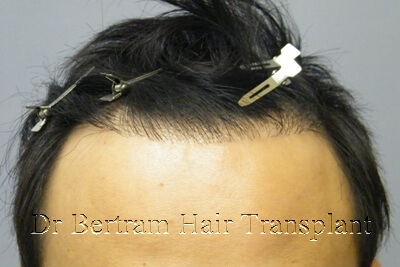
Example 1 : Position of the hairline was reasonable, but the density was too low. Also the hairline was too rigid and orderly to be natural
How We Fix It: Randomly add on density in front of and amongst the existing hairs
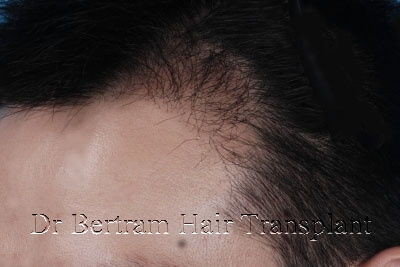
Example 2 : The new apex was too rounded. The transplanted hairs did not match the existing ones in angles and directions.
How We Fix It: Punch out the unwanted transplanted hairs and recycled, will leave scars
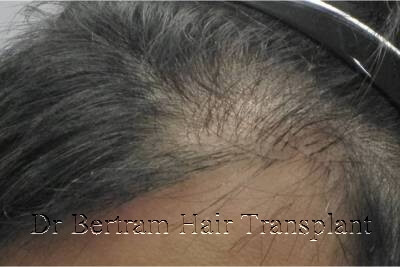
Example 3 : Not enough grafts to fill in the center behind the hairline, creating the look of a Kappa
How We Fix It: Simply add on the density
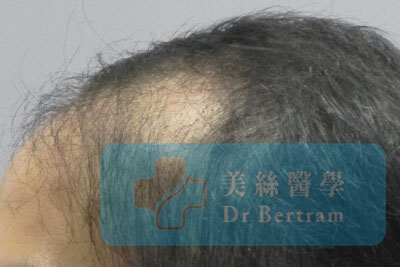
Example 4 : There was inadequate density of grafts behind the narrow hairline.
How We Fix It: Add more grafts in the empty area.
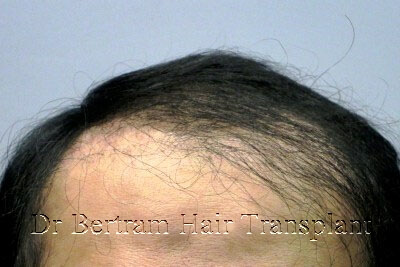
Example 5 : Asymmetry in the hairline – the right side is higher than the left by 2cm.
How We Fix It: Lower the right side by 1cm may improve.

Example 6 : Difficult to style the hair as the grafts were inserted perpendicularly. Correct angle should be 35-45°.
How We Fix It: No!

Example 7 : The typical ‘Corn Rows” appearance, when minigrafts instead of follicular units were used. The insertion was too orderly.
How We Fix It: Put some 1-hair FU in front, and add more grafts in between.
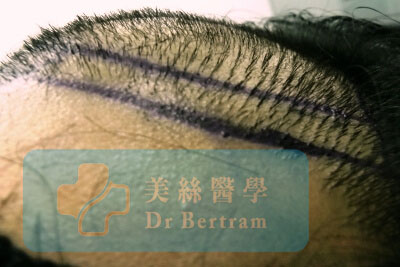
Example 8 : Another typical example of the “Corn Rows” appearance. The pattern is more obvious on cutting short the hair.
How We Fix It: Add grafts in between inorderly to be more natural looking.
Patients with:
Unnatural or low hairlines
Poor graft survival or low density
Visible pluggy grafts or linear/punch scars
Stable pattern of hair loss
Sufficient donor supply for correction
Not suitable if:
Active scalp disease (e.g., lichen planopilaris, alopecia areata)
Severe donor depletion from previous procedures
Unrealistic expectations about coverage or density
Typically 1,200 to 2,400 grafts ( 2,400 – 3,600+ Hairs ) depending on:
Size and location of the area needing correction
Type of deformity (hairline, scar, plug)
Most importantly, availability of usable donor hair
We avoid using excessive grafts to deplete further the donor areas; long-term planning is extremely important.
Usually 1 to 2 sessions:
Chosen based on previous surgical technique and current donor quality:




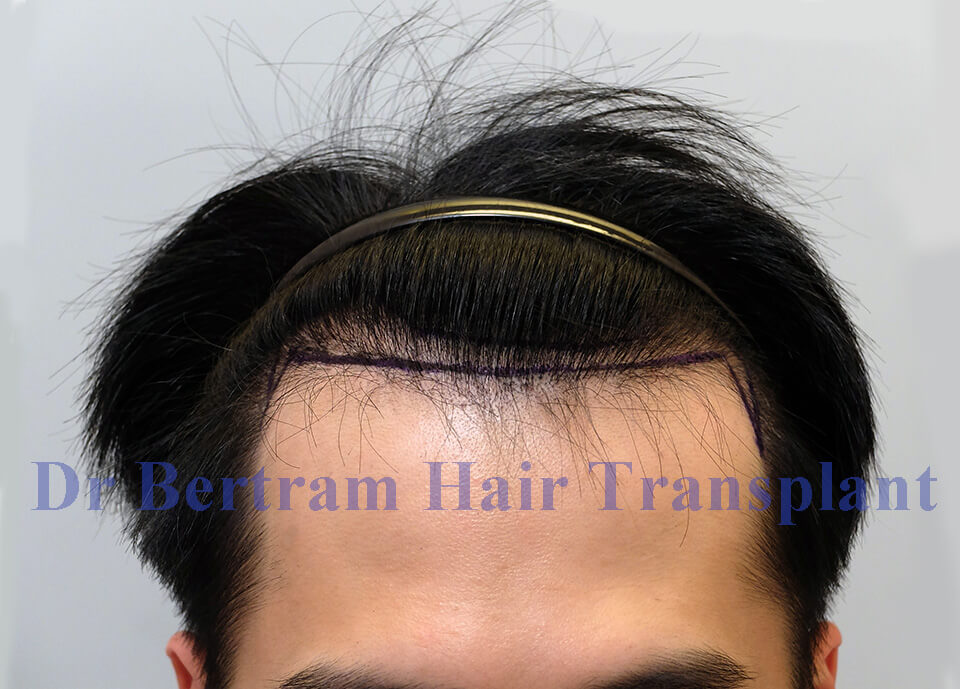
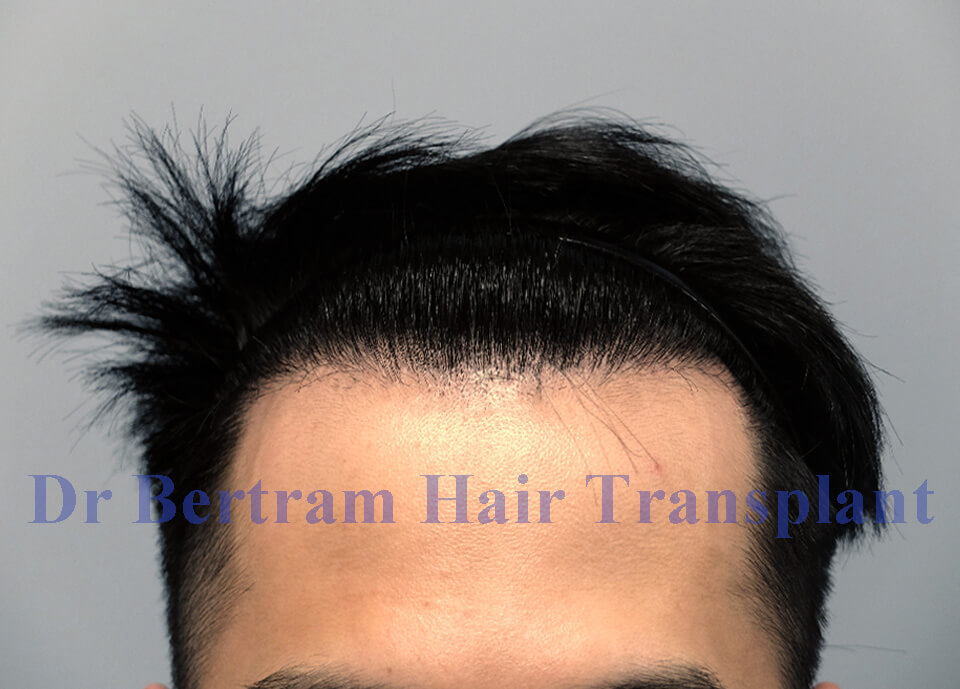
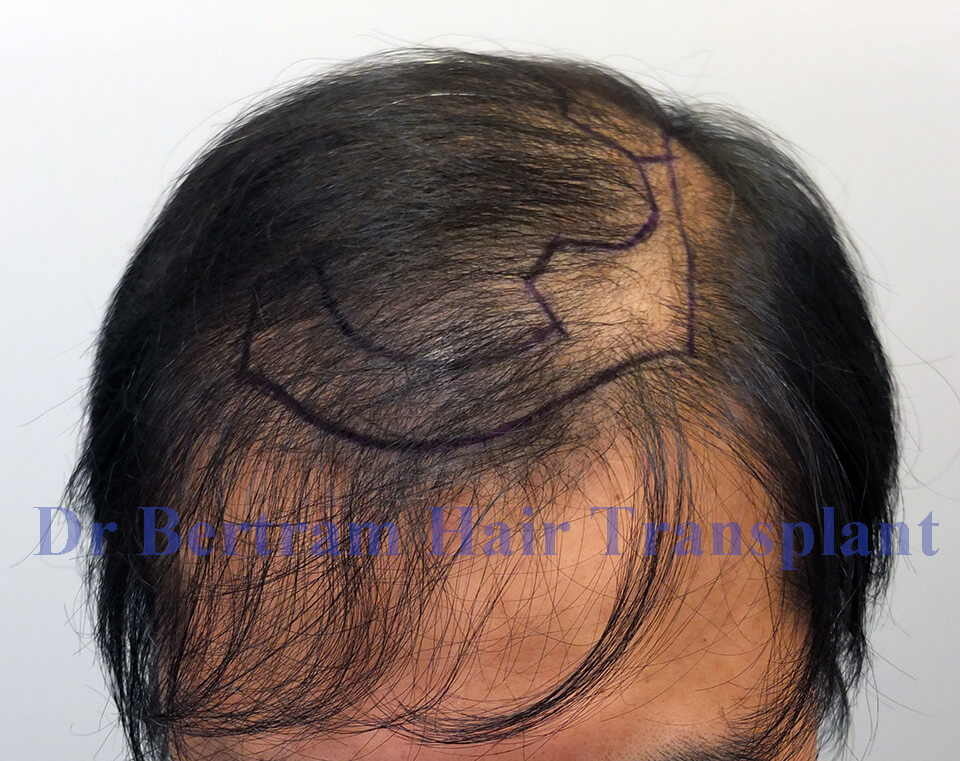

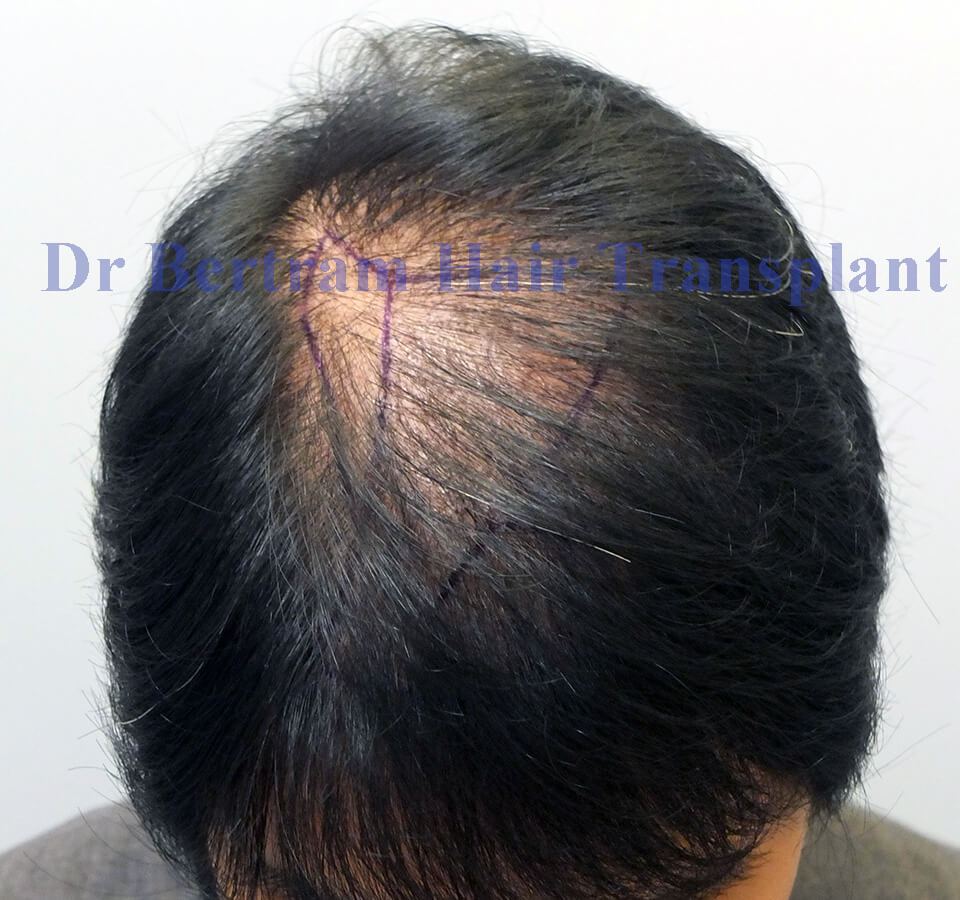
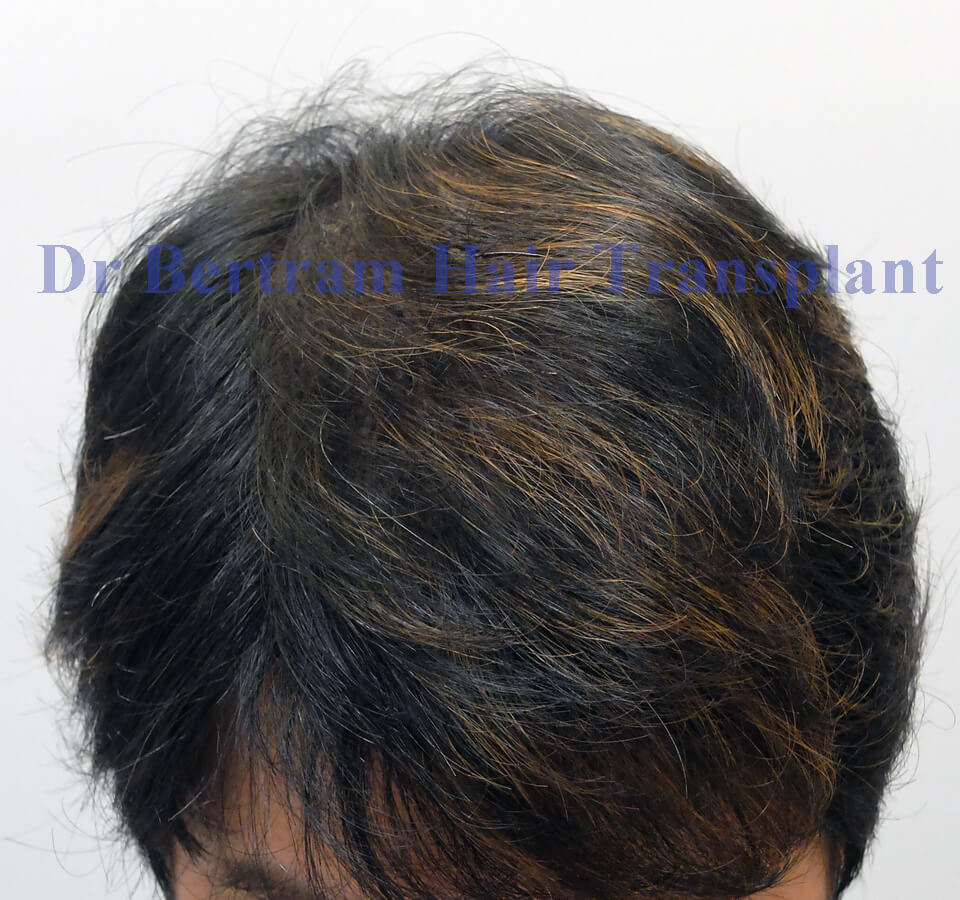


Many investors believe hair transplant is a quick way of making money. Centers are set up all over the world and doctors without proper training are assigned to take the follicles out and put them back, without caring about the result. Consequently we are seeing more and more clients with unsatisfactory results, such as scarring and hair grafts that are not growing. This has become a global problem.
The ISHRS has designated November 11th every year as “World Hair Transplant Repair Day” as a way of helping patients who have had a botched hair transplant surgery by unqualified doctors or black market clinics. As an ISHRS Fellow Member we are part of this mission.
Shock loss refers to the temporary shedding of native hair following a hair transplant procedure. It’s more frequently observed in women but occasionally seen in men, though much less affected and less common.
Shock loss is typically triggered by surgical trauma or stress to the scalp. Even when carefully performed, the procedure can temporarily disturb surrounding native hairs, especially if those hairs are already weakened due to:
Genetic miniaturization ( male pattern baldness )
Scalp inflammation or poor circulation
Nutritional deficiency or chronic stress
Onset: Typically 2–4 weeks post-transplant
Recovery: New growth generally begins around 3–4 months
Full regrowth: Usually achieved by 6–12 months
Most of the shed hairs return, often healthier and stronger with proper care and recovery support.
At our clinic, we take every precaution to reduce the chance and impact of shock loss:
Gentle and precise implantation to minimize trauma
Avoiding overpacking grafts into fragile native zones
Offering LLLT (Low-Level Laser Therapy) to enhance recovery
Advising targeted supplements and optional pre-op minoxidil for borderline areas
In most male patients, no. Shock loss is a temporary phase in the healing process.
However, if the affected hairs were already severely miniaturized, they may not return — not because of the transplant, but because they were nearing the end of their life cycle.

The most critical limitation in Corrective Procedures is limited donor hair. Unfortunately, many cases are beyond repair when no donor hairs left.
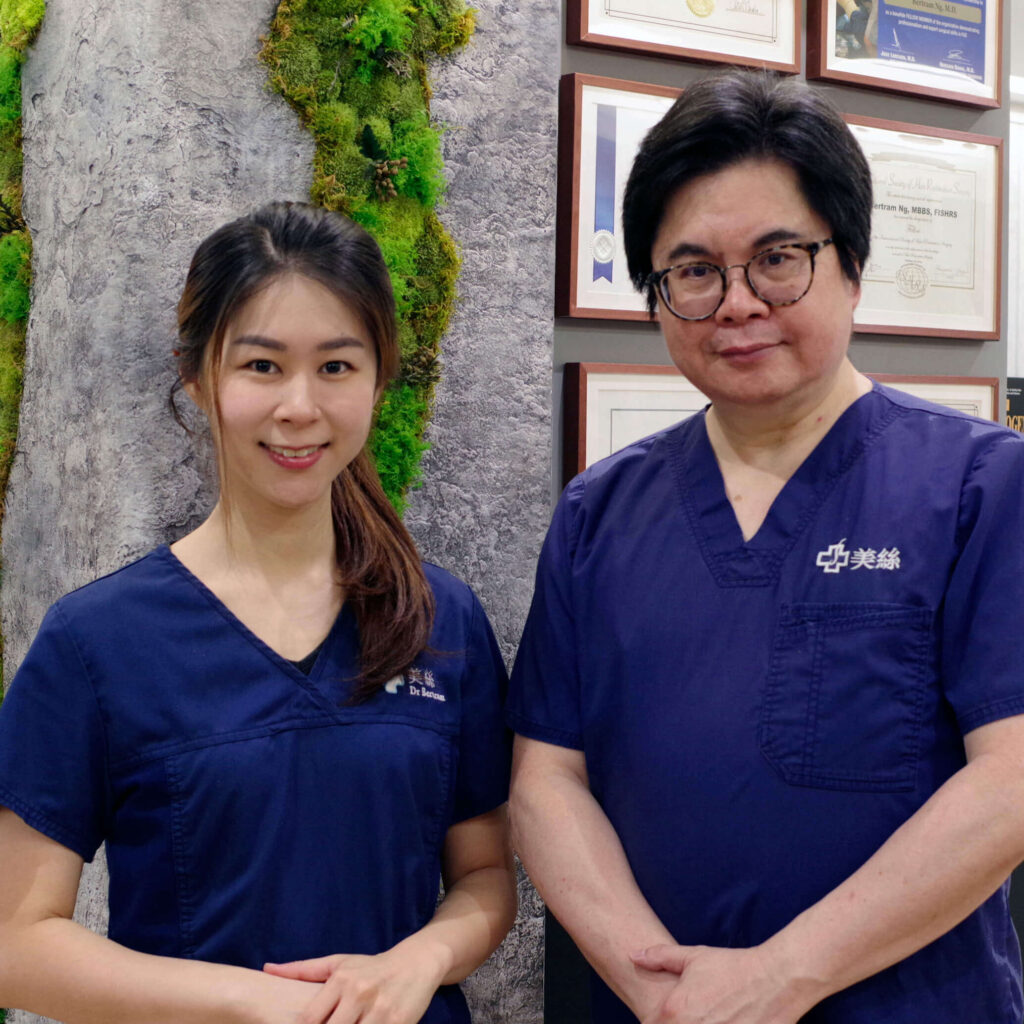
From consultation, surgery, to aftercare, you will receive continued personal care by our doctors, not just consultants.
Have a question? Please feel free to call our friendly customer service.
International Accreditations
Recognized by leading global medical bodies, our clinic stands as one of the most qualified and internationally accredited hair transplant centers in Hong Kong and mainland China. We are proud to uphold the highest standards in medical ethics, safety, and surgical expertise.
Hair transplant is the ultimate solution to restores hair, but not everyone is good candidate.
Our online assessment helps determine if these procedures suit you, saving you time and costs.